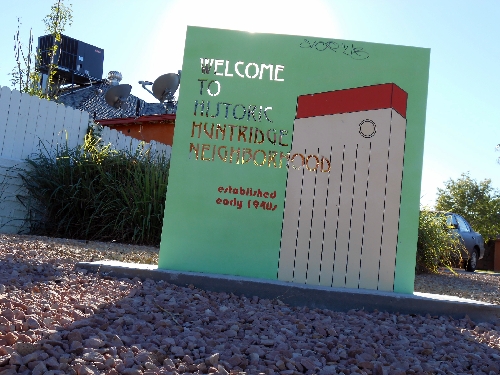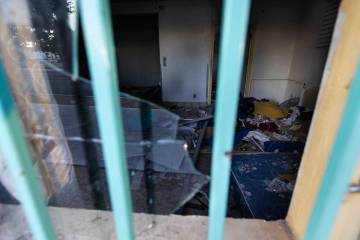Leigh Hunt developed namesake theater and neighborhood
The story behind the Huntridge neighborhood and its park and theater's namesake is the stuff of legend that few know.
A local historian and author in his free time and honorary consul of Monaco by trade, Jonathan Warren has been researching the neighborhood's history for a book he plans to write.
The story of how Huntridge starts out is two mysteries, according to Warren.
Completed in 1944, at the height of the war effort, how could someone manage to build an entire neighborhood and theater, complete with a 75-foot-tall tower?
"During that time, you could not get the materials or the manpower. It was all requisitioned by the government," Warren said. "In order to get anything built, you had to seek approval from a federal government office, and the only ones who got it had juice."
The theater's tower was the tallest sign off the Strip at the time. "That is a huge amount of materials," Warren said. "It's almost showing off for that time."
The second mystery is the name . The Huntridge, completed in 1944, was named for Leigh Hunt, a local business man and land owner, but Hunt died in 1933, and not much is known about the control of his estate.
Warren said Hunt became the third president of Iowa State University before he was 30. He eventually moved to Seattle, where the young entrepreneur bought a profitable mining interest in the remote Monte Cristo mines.
Hunt made a fortune by selling his stake of the mine to John D. Rockefeller in 1890 and purchased two Seattle newspapers, creating the Seattle Post-Intelligencer . With investors, he also opened his own bank. "Hunt became Seattle's wealthiest citizen in a few year s' time," Warren said. "But in the panic of 1895, he lost everything."
Hunt went on to buy and sell railroads and mines in North Korea, paid back all of his previous investors, helped develop the seeding, irrigation and harvesting that produced the Egyptian cotton industry and was instrumental in the construction of the Sennar Dam in 1925. He eventually moved to Las Vegas upon hearing of the plan for Hoover Dam and its opportunities.
"Hunt bought a couple of mines in the area and large parcels of land in the valley," Warren said.
Hunt's son Henry Leigh Hunt, who grew up in Sudan while with his father, became a famous biplane pilot in World War I and married and divorced famous French writer Louise de Vilmorin, escaped Nazi-occupied France , returned to Las Vegas in 1942 and took control of the family estate.
"The way the Hunts did business is they always operated in what they called the cat's paw : they never had their name on anything," Warren said. "It would always be corporate, and at the corporate helm would always be somebody else."
So Henry Leigh Hunt used investors, who included Francis Griffin and his wife, actress Irene Dunne, along with actress Loretta Young to develop the Huntridge Theater and neighborhood, according to Warren.
The area played an important role in Las Vegas history, according to Downtown resident Brian "Paco" Alvarez.
"Huntridge Theater was the first racially integrated theater," he said. "It was built way outside of town (at the time) and competed directly with venues like the El Portal and Fremont Theater."
The theater was acquired by the Friends of the Huntridge, a nonprofit group dedicated to the preservation of the theater, in 1991 and sold to the Mizrachi family in 2002.
Cima Mizrachi recently won approval from the Las Vegas City Council for a $19,000 visual improvement grant and a special-use permit for secondhand sales on the property.
Mizrachi recently told the Las Vegas Review-Journal that she plans to convert the building into a secondhand clothing and furniture store.
Contact Paradise/Downtown View reporter Nolan Lister at nlister@viewnews.com or 702-383-0492.

















